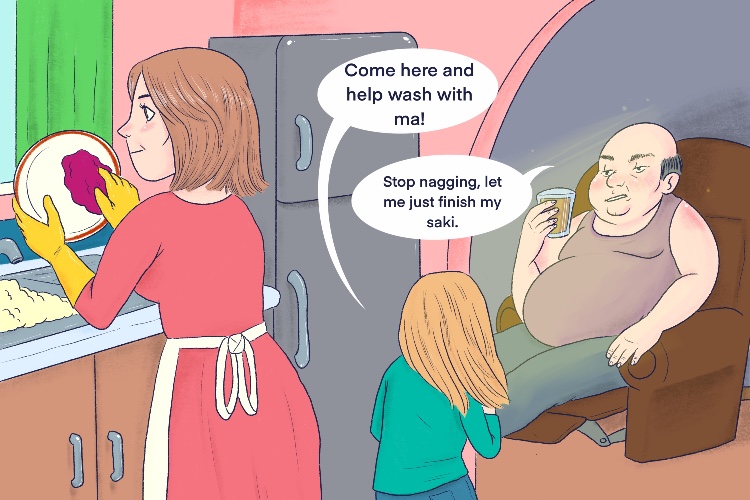Hiroshima and Nagasaki – Hiroshima was the first city to have a nuclear bomb dropped on it and Nagasaki was the second. Both cities are in Japan
We all remember Hiroshima but we should also remember there was a second bomb dropped at Nagasaki.

"Come here and help wash with ma," (Hiroshima) said the girl.
"Stop nagging. I just want to drink my saki," (Nagasaki) said her Dad.
On August 6 1945, an American B-29 bomber, called Enola Gay, dropped the first deployed atomic bomb, called Little Boy, on the Japanese city of Hiroshima.
The bomb destroyed 90 per cent of the city, instantly killing an estimated 80,000 people.
A second atomic bomb, Fat Man, was dropped by the Americans on another Japanese city, Nagasaki, just three days later, instantly killing an estimated 40,000 people.
Tens of thousands of people died later, in both cities, from the effects of the bombs.
Such destructive power had never been seen before.
World War II ended a few days later. Emperor Hirohito of Japan announced the country's unconditional surrender on August 15, 1945.
The ability of the Americans to deploy the bombs was the result of the Manhattan Project. The US Army Corps of Engineers had spearheaded the construction of the huge facilities needed for the top-secret project. It started in 1940 and over the next few years scientists worked on production of the key materials required.
These materials – chiefly uranium and plutonium – were sent to the state of New Mexico where a team led by Robert Oppenheimer turned them into workable atomic bombs.
The Manhattan Project held its first successful test of an atomic device early on the morning of July 16 1945 at the Trinity test site at Alamogordo, New Mexico.
The Japanese rejected the Allies' demand for surrender put forward in the Potsdam Declaration of July 1945, even though the Allies had threatened "prompt and utter destruction" if they refused.
Interesting fact: The B-29 bomber that dropped the Hiroshima bomb was named Enola Gay after Enola Gay Tibbets, the mother of the plane's pilot, Colonel Paul Tibbets.




